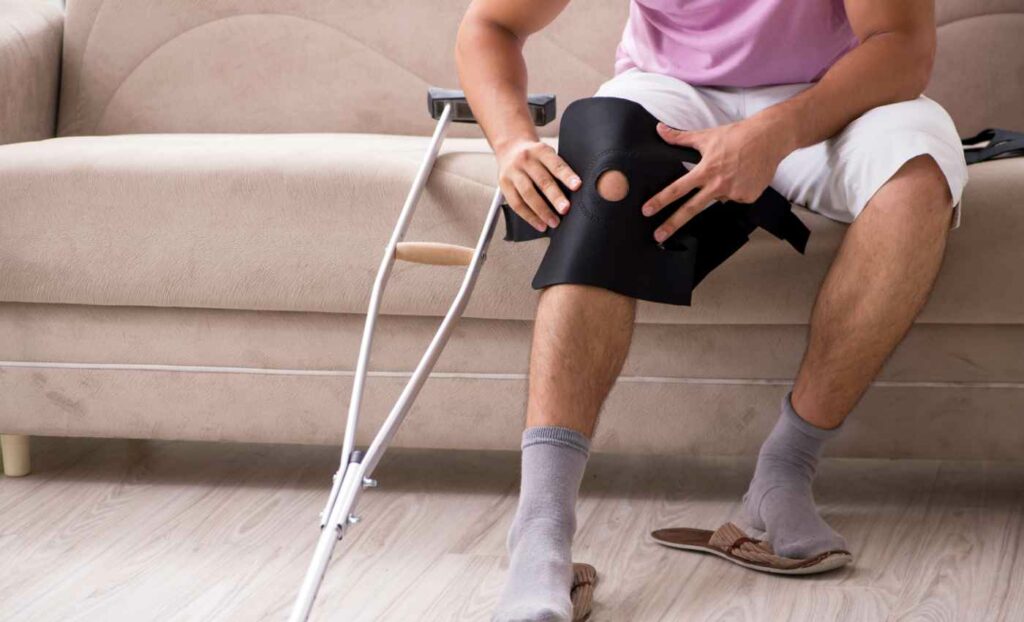Some of the most profound healing effects can come from the simplest of tools – human hands. Manual physical therapy, also referred to as hands-on therapy, is a therapeutic approach that uses the power of touch to address a range of musculoskeletal issues and promote recovery.
In this blog, we delve into the practical world of manual physical therapy, where skilled therapists use their hands to manipulate, mobilize, and restore the body’s natural movement. From alleviating pain to enhancing flexibility, this approach offers a holistic path to better health. So, let’s dive in.
Contents
Understanding Manual Physical Therapy
Manual Physical Therapy is a specialized branch of therapeutic practice that places the healing touch of a skilled therapist at its core. Unlike conventional treatments that rely on machines or devices, Manual Physical Therapy involves the therapist’s hands working in tandem with the body’s natural healing processes to alleviate pain, restore function, and enhance overall well-being.
In manual physical therapy, the therapist applies precise and controlled movements to joints, muscles, and soft tissues. These techniques aim to improve joint mobility, alleviate pain, reduce muscle tension, and enhance overall function. Manual therapy can be especially effective in addressing conditions such as back pain, neck pain, joint stiffness, and sports-related injuries.
Therapists trained in manual physical therapy undergo specialized education and training to develop the skills necessary for accurate assessment and effective treatment. They mainly use their hands to manipulate, mobilize, and manipulate tissues, guiding the body towards improved alignment and movement.
Benefits of Manual Physical Therapy
Through targeted techniques and personalized care, this therapy offers remarkable advantages that promote pain relief, improved functionality, as well as holistic healing. Now, let’s delve deeper into the transformative benefits that Manual Physical Therapy can provide:
- Personalized Approach for Tailored Care: Manual Physical Therapy recognizes your individuality, addressing your specific needs and goals. Therapists craft a customized treatment plan specifically for your needs.
- Enhanced Mobility and Movement: By targeting joint mobility, muscle flexibility, and tissue health, Manual Physical Therapy can significantly improve your functional capacity. Experience greater ease of movement, expanded range of motion, and heightened physical performance.
- Effective Pain Management: Chronic pain can be alleviated through the precise techniques of Manual Physical Therapy. Therapists work to reduce muscle tension, alleviate nerve compression, and enhance blood circulation, leading to a reduction in pain and discomfort.
- Holistic Healing and Vitality: The tactile nature of this therapy stimulates blood flow and promotes natural healing mechanisms within your body. Experience holistic rejuvenation as tissues repair, leading to improved vitality and an overall sense of well-being.
- Mind-Body Connection: Beyond physical benefits, Manual Physical Therapy fosters a strong mind-body connection. By nurturing physical health, you often experience reduced stress, enhanced emotional balance, and improved mental well-being.
- Active Participation in Recovery: Manual Physical Therapy empowers you to take an active role in your healing process. While collaborating closely with your therapist, you gain a deeper understanding of your body, promoting body awareness and long-term wellness.
- Comprehensive Wellness: Manual physical therapy not only relieves the symptoms of the condition. This therapy addresses the interconnectedness of the body, mind, and spirit, nurturing a sense of vitality that extends to all aspects of your life.
Techniques Used In Manual Physical Therapy
Manual Physical Therapy employs a diverse array of techniques that leverage skilled hands to facilitate healing and restore optimal function. These hands-on approaches are carefully tailored to address individual needs, aiming to alleviate pain, enhance mobility, and promote overall well-being. Let’s explore some of the key techniques employed in Manual Physical Therapy:
Soft Tissue Mobilization
Skilled therapists apply precise pressure and movements to manipulate soft tissues such as muscles, tendons, and ligaments. This technique promotes circulation, relaxes tense muscles, and reduces adhesions, contributing to pain relief and improved flexibility.
Joint Mobilization
Through gentle and controlled movements, joint mobilization aims to restore a normal range of motion and reduce joint stiffness. Therapists use their hands to guide specific joint movements, thus, promoting optimal alignment and function.
Myofascial Release
This technique focuses on releasing tension within the fascia, the connective tissue that surrounds muscles and organs. Manual pressure and stretching thus help release restrictions, enhance blood flow, and improve tissue mobility.
Trigger Point Therapy
Skilled therapists basically locate and apply pressure to trigger points—areas of muscle tension and hypersensitivity. By releasing these trigger points, muscle tension is then, reduced, promoting pain relief and relaxation.
Muscle Energy Techniques
These techniques involve gentle contractions of specific muscles against therapist resistance. Muscle energy techniques significantly help improve joint mobility, increase muscle flexibility, and restore proper muscle balance as well.
Strain-Counterstrain
Therapists identify tender points in muscles and gently guide them into positions of comfort, relieving muscle spasms and reducing pain.
Neuromuscular Techniques
These techniques target nerve-related issues, such as entrapment or compression. Skilled therapists use precise pressure and movements to release tension around affected nerves.
Spinal Mobilization
Therapists use their hands to apply controlled forces to the spine, helping to restore proper spinal alignment, reduce pain, and improve overall spinal function.
Deep Tissue Massage
This technique involves applying firm pressure to reach deeper layers of muscle tissue. So that it can release chronic muscle tension, improve circulation, and promote relaxation.
Conditions Treated with Manual Physical Therapy
There are a variety of conditions that can be effectively managed or treated with manual physical therapy. Let’s delve into some of these conditions.
Back Pain
Manual physical therapy is commonly used to address various types of back pain, including lower back pain, upper back pain, and sciatica. Techniques such as spinal manipulation, joint mobilization, and soft tissue mobilization can help alleviate pain, improve spinal alignment, and enhance mobility.
Neck Pain
Individuals experiencing neck pain due to muscle tension, poor posture, or whiplash injuries can benefit from manual therapy. Therapists use techniques to release muscle tightness, improve neck mobility, and reduce discomfort.
Joint Stiffness
Manual therapy is effective in improving joint range of motion and reducing stiffness in joints such as the shoulders, hips, knees, and ankles. By carefully manipulating and mobilizing the joints, therapists can help restore normal movement patterns.
Headaches and Migraines
Some headaches and migraines are linked to musculoskeletal issues, such as tension in the neck and upper back. Manual therapy can help alleviate muscle tension, improve blood flow, and reduce headache frequency and intensity.
Sports Injuries
Athletes often turn to manual therapy to treat sports-related injuries, such as sprains, strains, and muscle imbalances. The hands-on techniques can promote healing, reduce inflammation, and restore optimal function.
Muscle Imbalances
Imbalances in muscle strength and flexibility can lead to pain and dysfunction. Manual therapy helps address these imbalances by releasing tight muscles and facilitating proper muscle activation.
Arthritis
Manual therapy can provide relief for individuals with arthritis by improving joint mobility, reducing pain, and enhancing overall joint function. Gentle manipulation and mobilization techniques are often used to manage arthritic symptoms.
Post-Surgery Rehabilitation
After surgical procedures, manual therapy can aid in the recovery process. Therapists work to minimize scar tissue formation, improve circulation, and restore movement to the affected area.
Nerve Impingements
Conditions such as herniated discs or compressed nerves can cause nerve impingements and radiating pain. Manual therapy can help alleviate pressure on the nerves, reduce pain, and improve nerve function.
Pregnancy-Related Discomfort
Manual therapy can provide relief for pregnant individuals experiencing back pain, pelvic pain, and other discomforts associated with pregnancy. Techniques are modified to ensure safety for both the individual and the baby.
Conclusion
From its remarkable ability to target musculoskeletal disorders to its role in relieving joint pain, sports injuries, and chronic discomfort, manual therapy proves to be a versatile and effective approach to enhancing physical well-being. Whether you’re seeking relief from postural imbalances, recovering from surgery, or looking to address neurological conditions, the guiding touch of manual therapy offers a path to healing and renewed vitality.
Physical Therapy helps patients recover from pain. If you’re experiencing Back, Shoulder, Knee, Neck, Elbow, Hip, or Arthritis pain, a physical therapist at PhysioMantra can help: Book an online physical therapy session.







